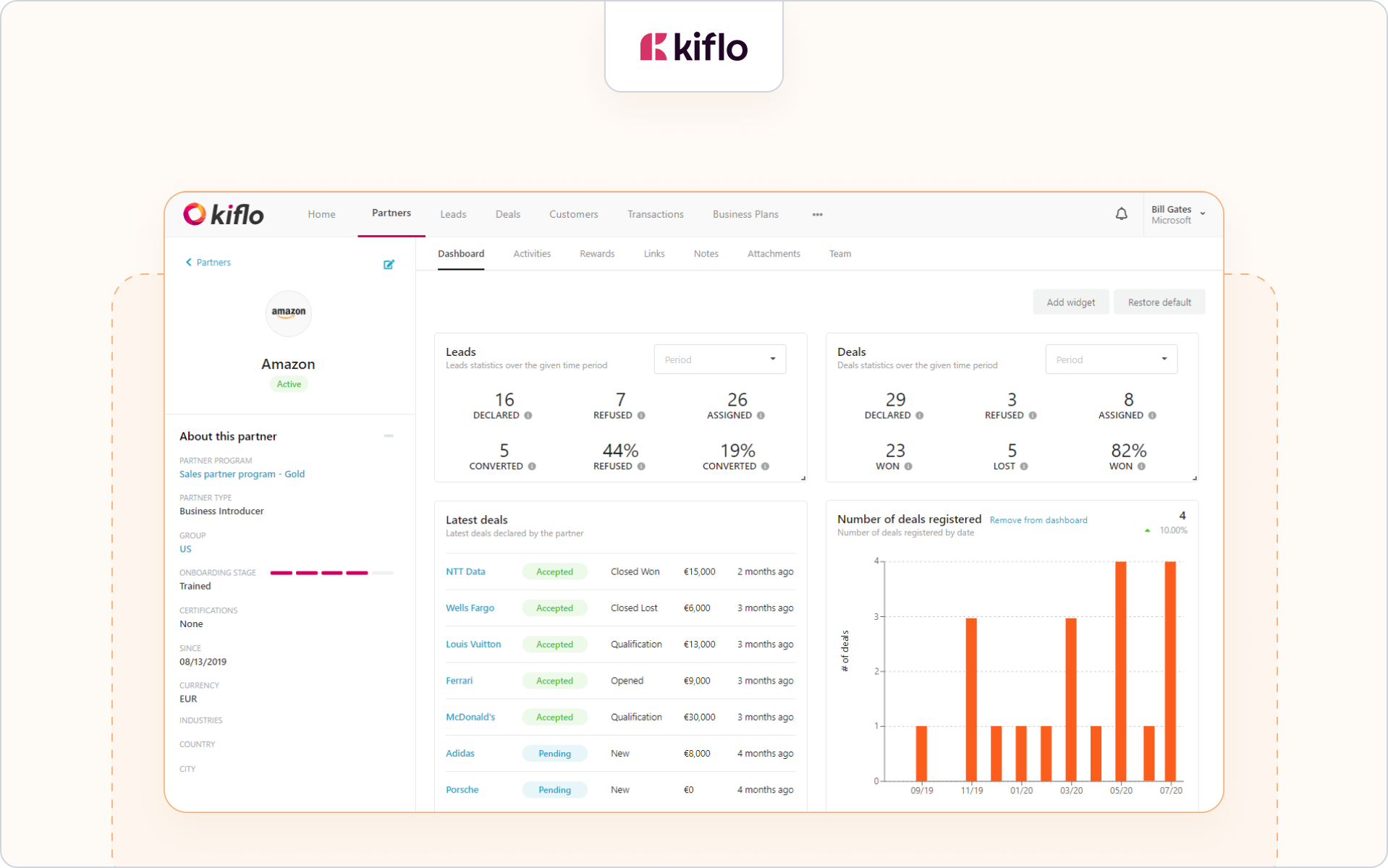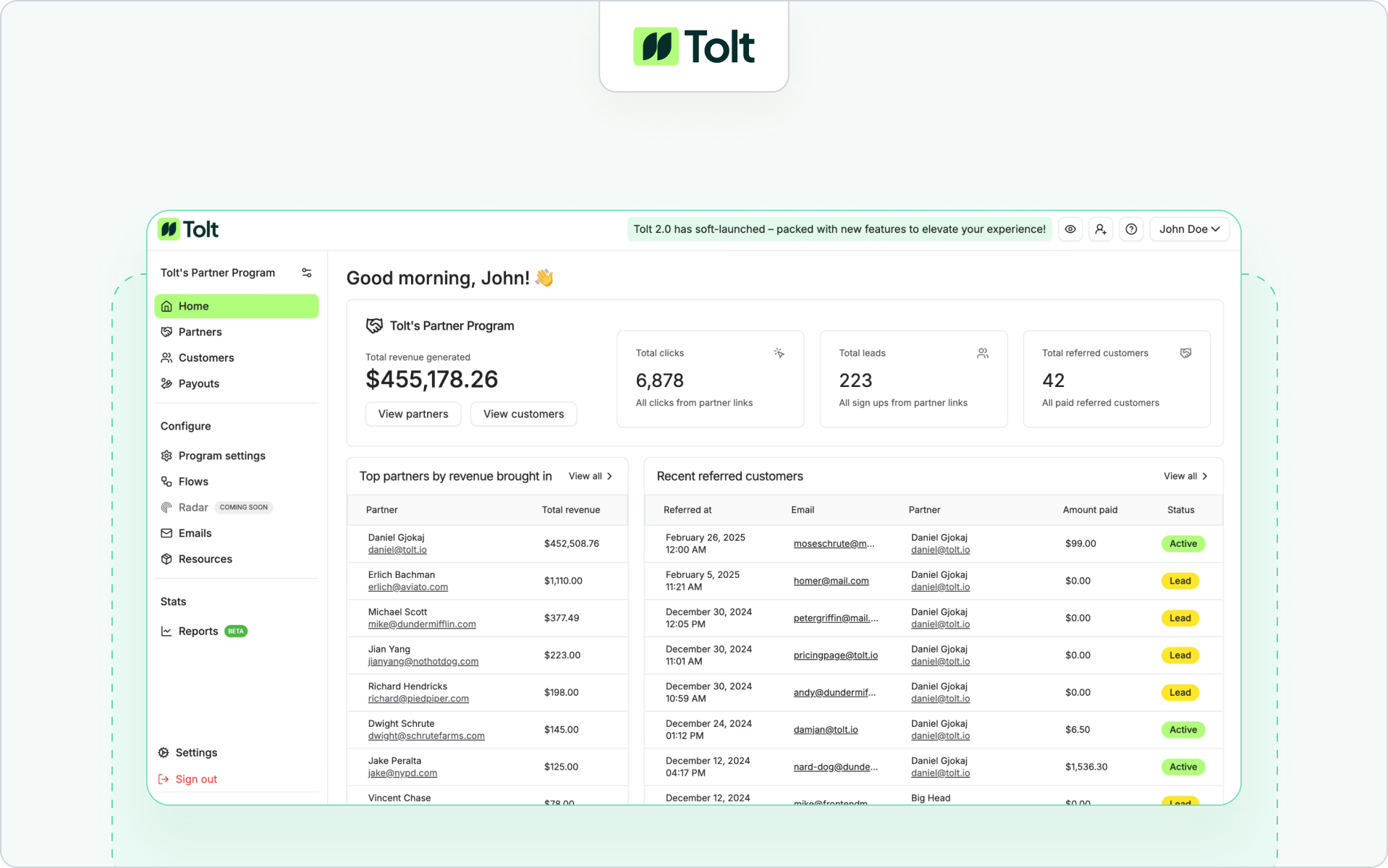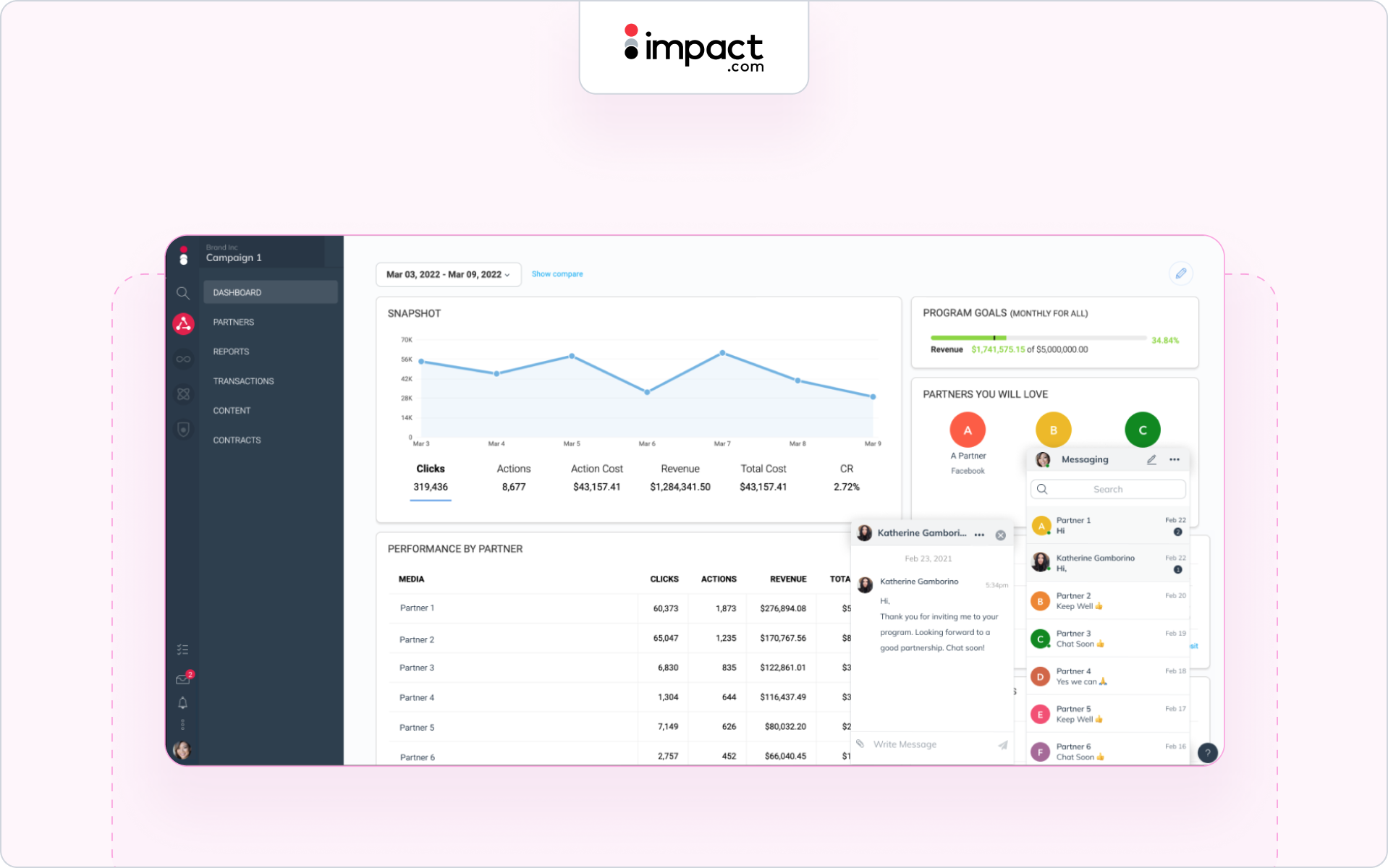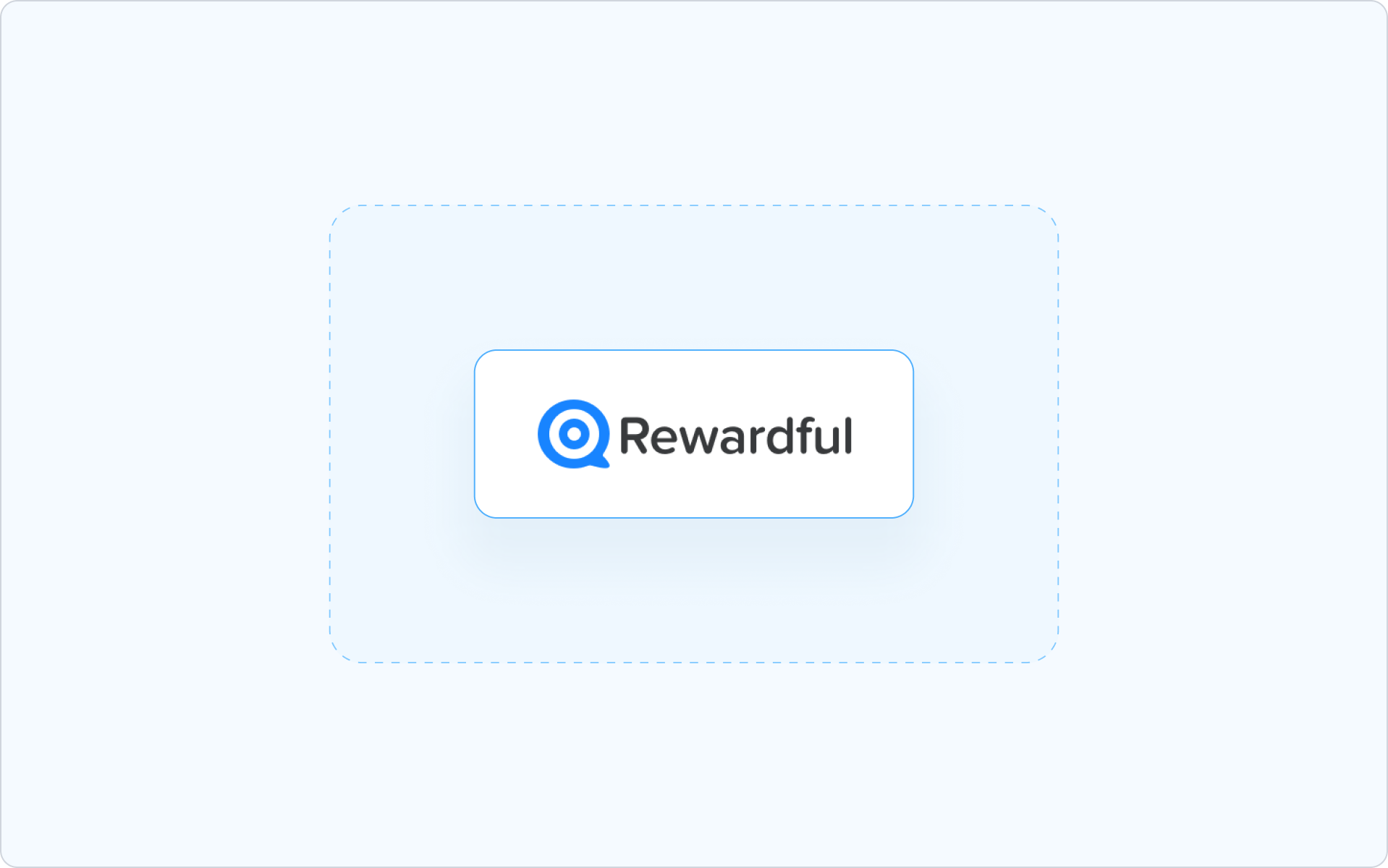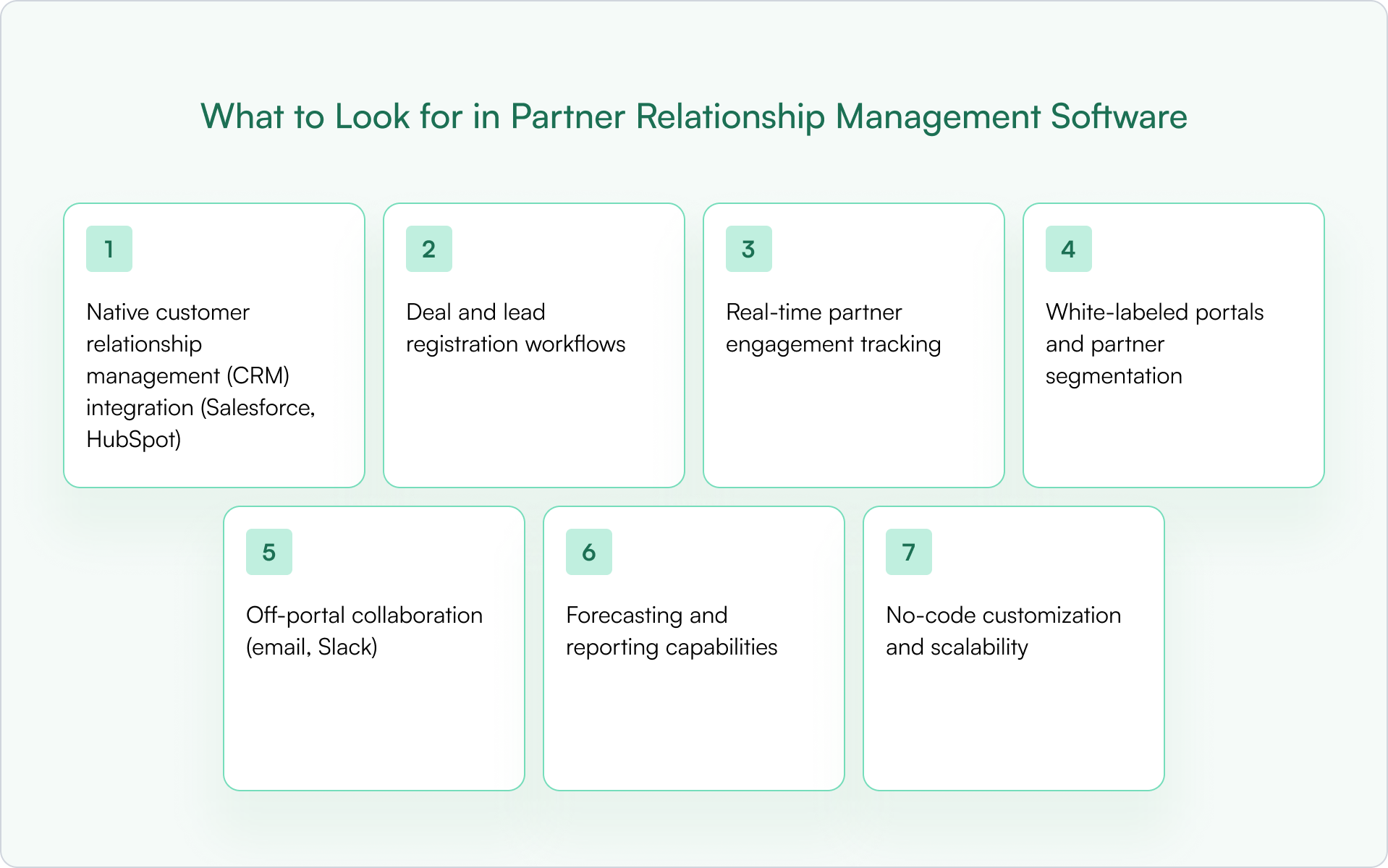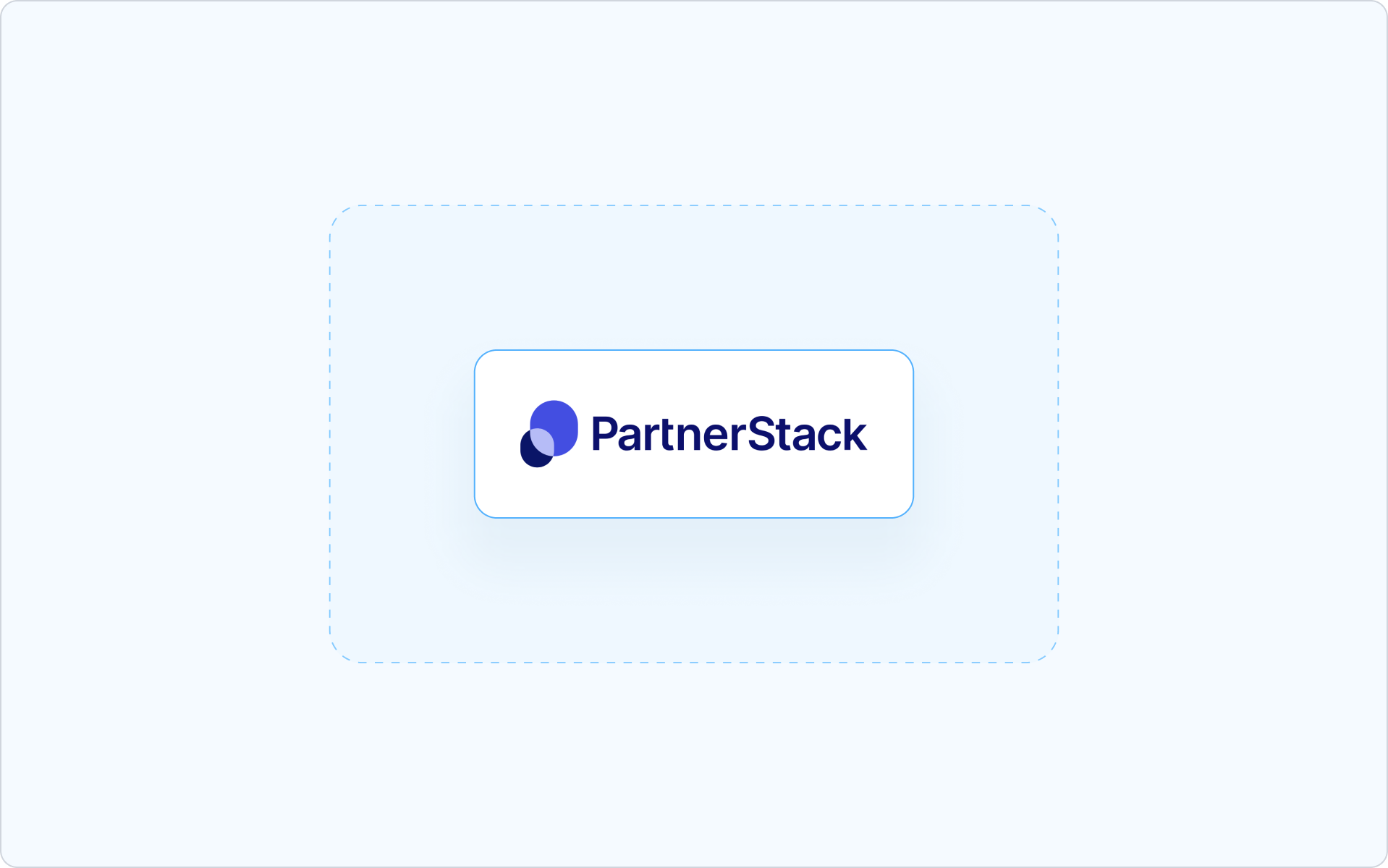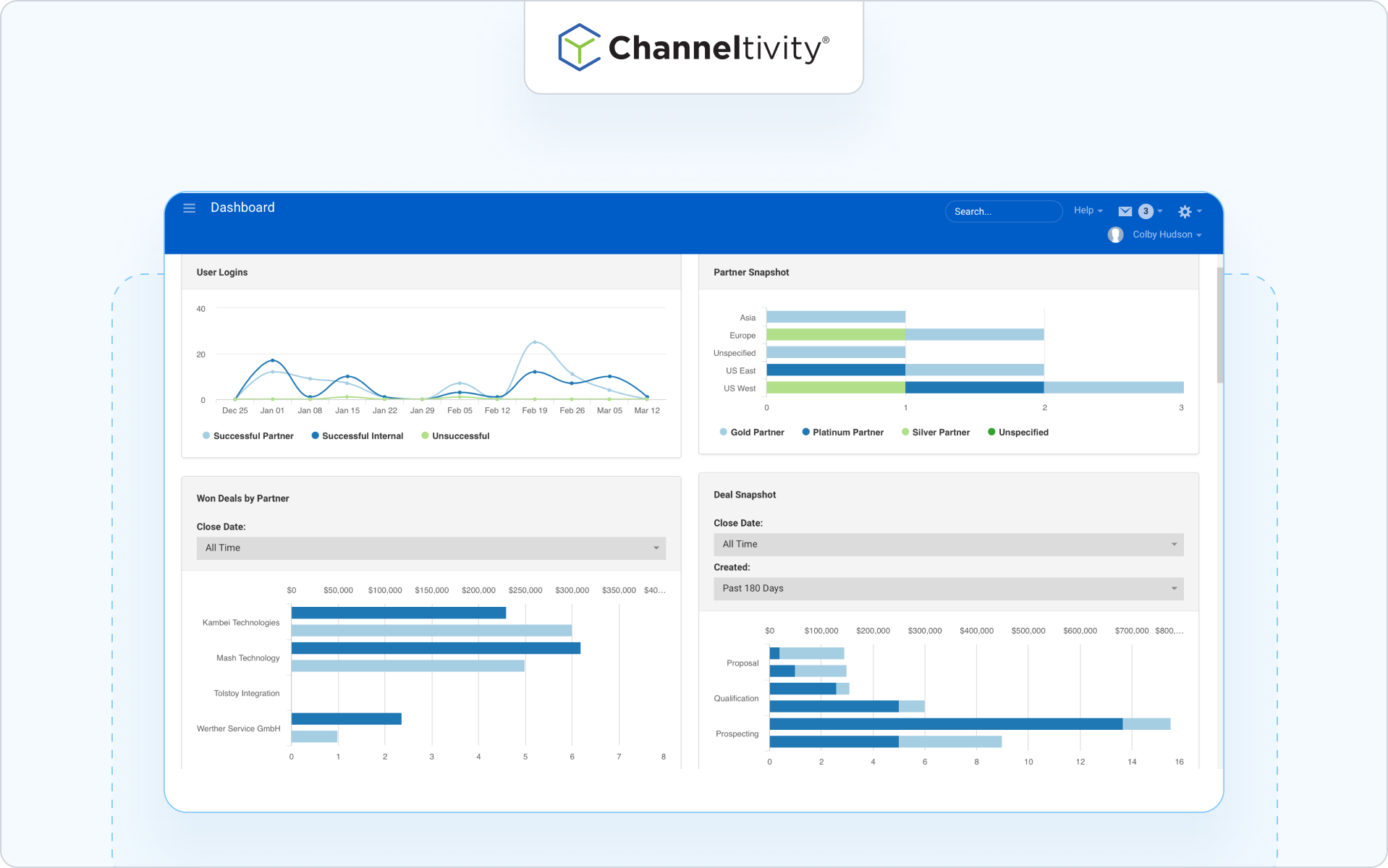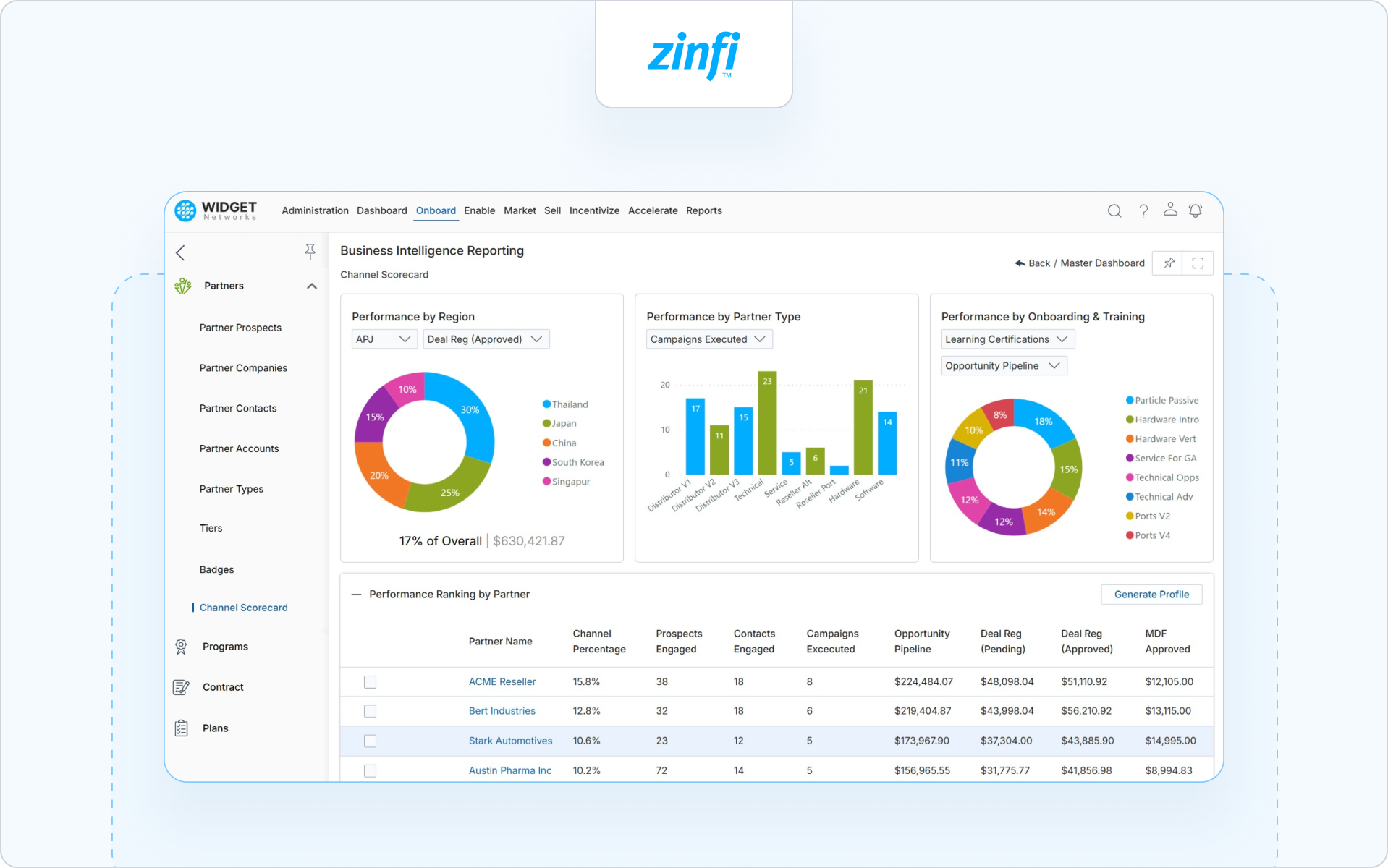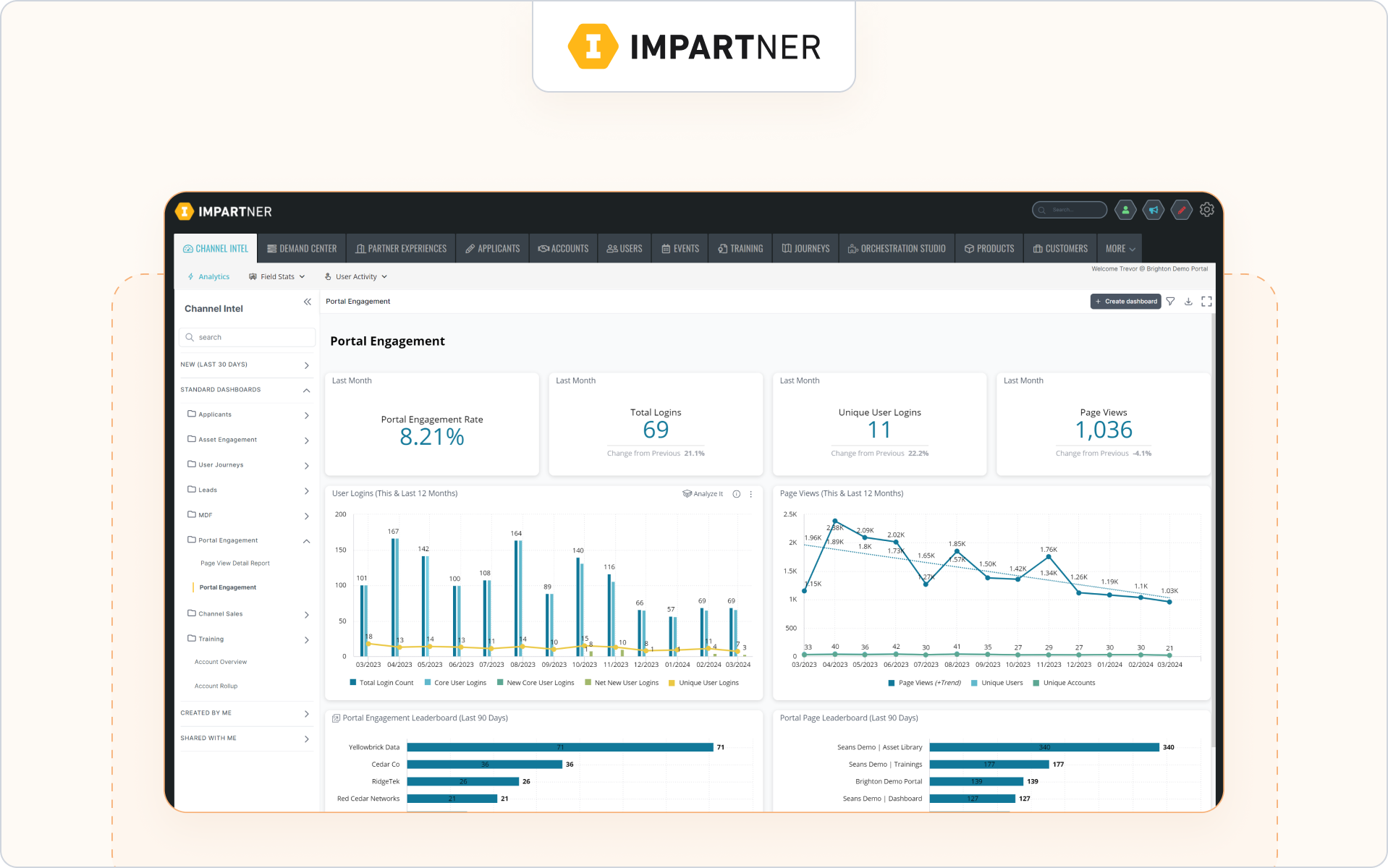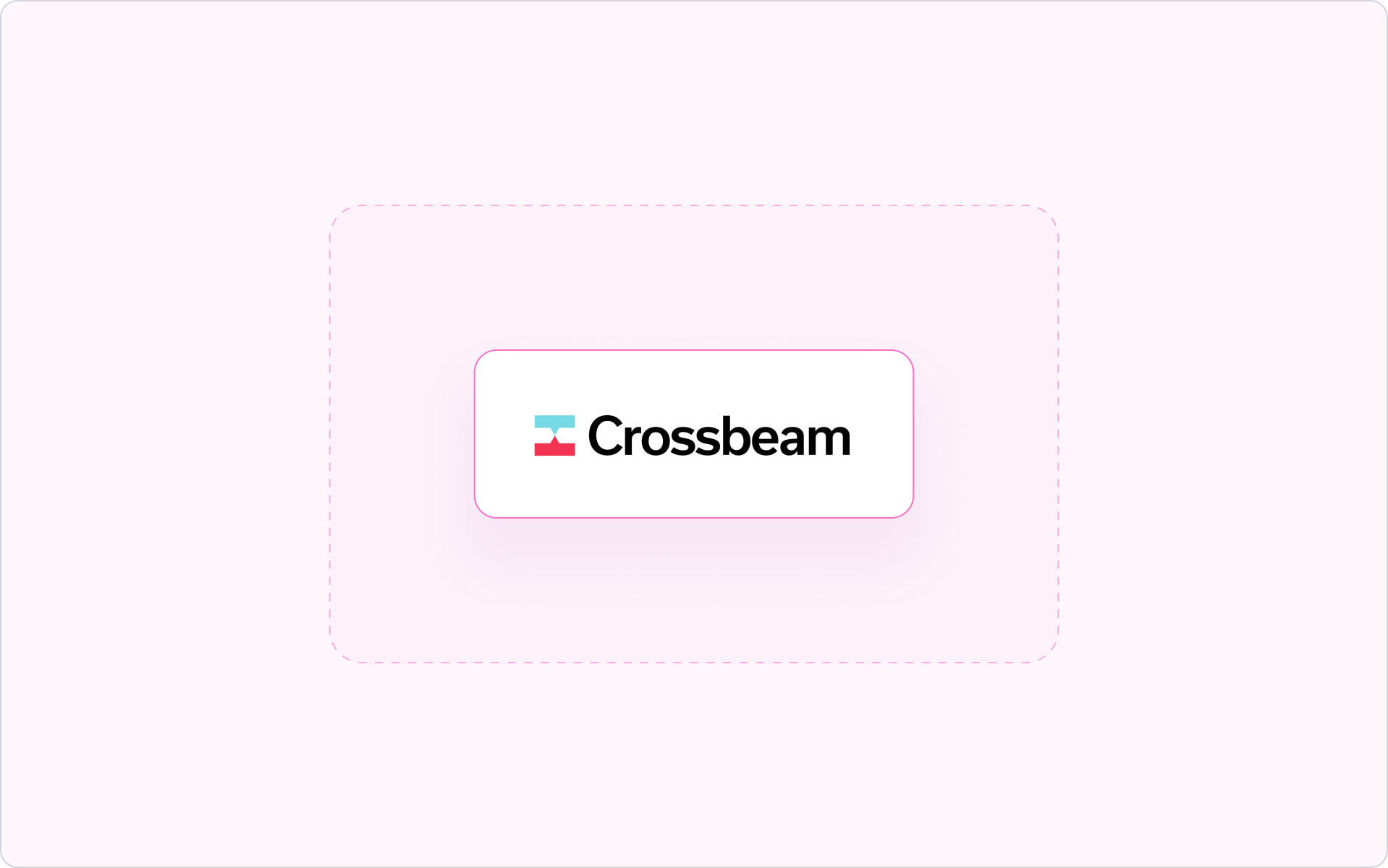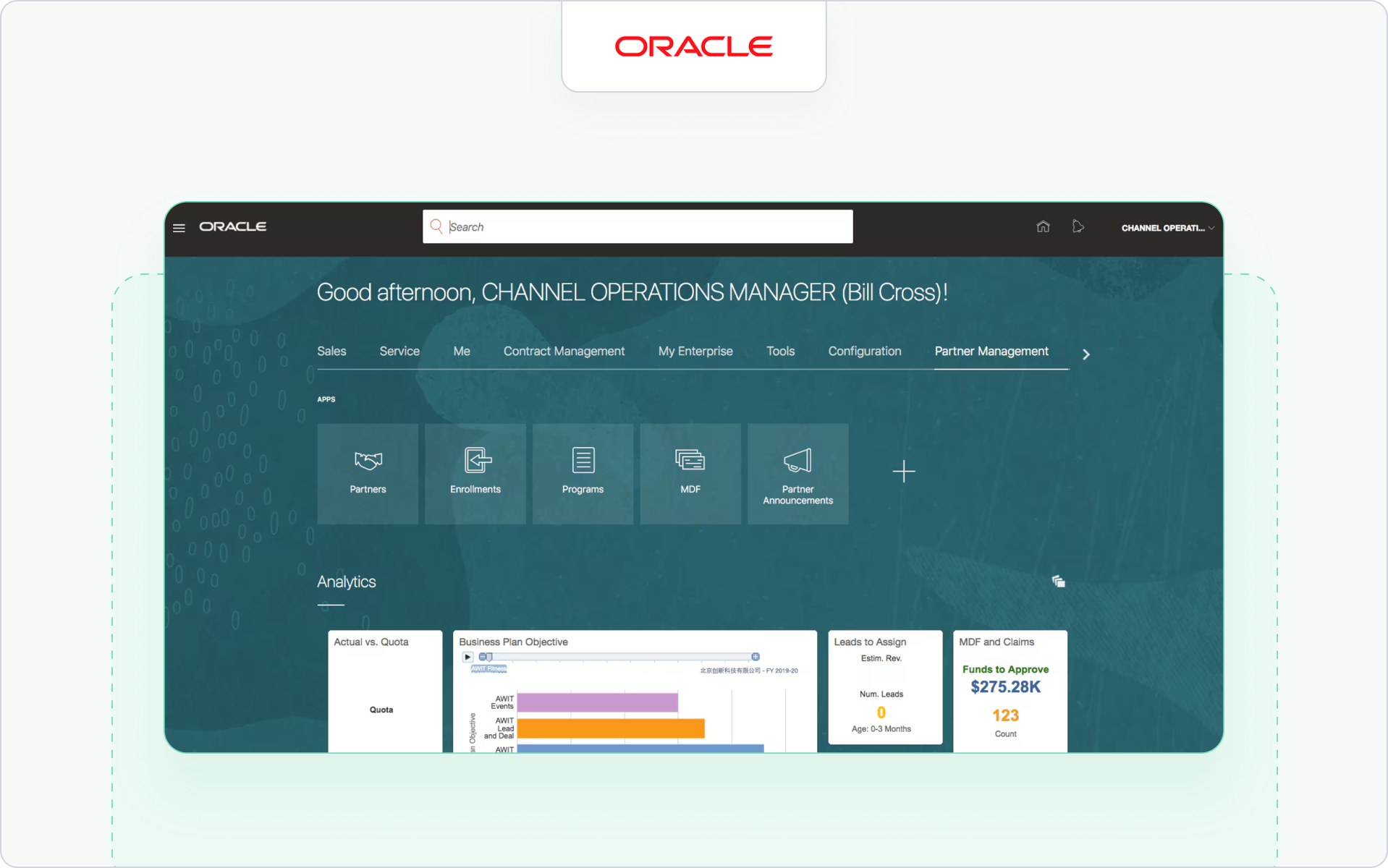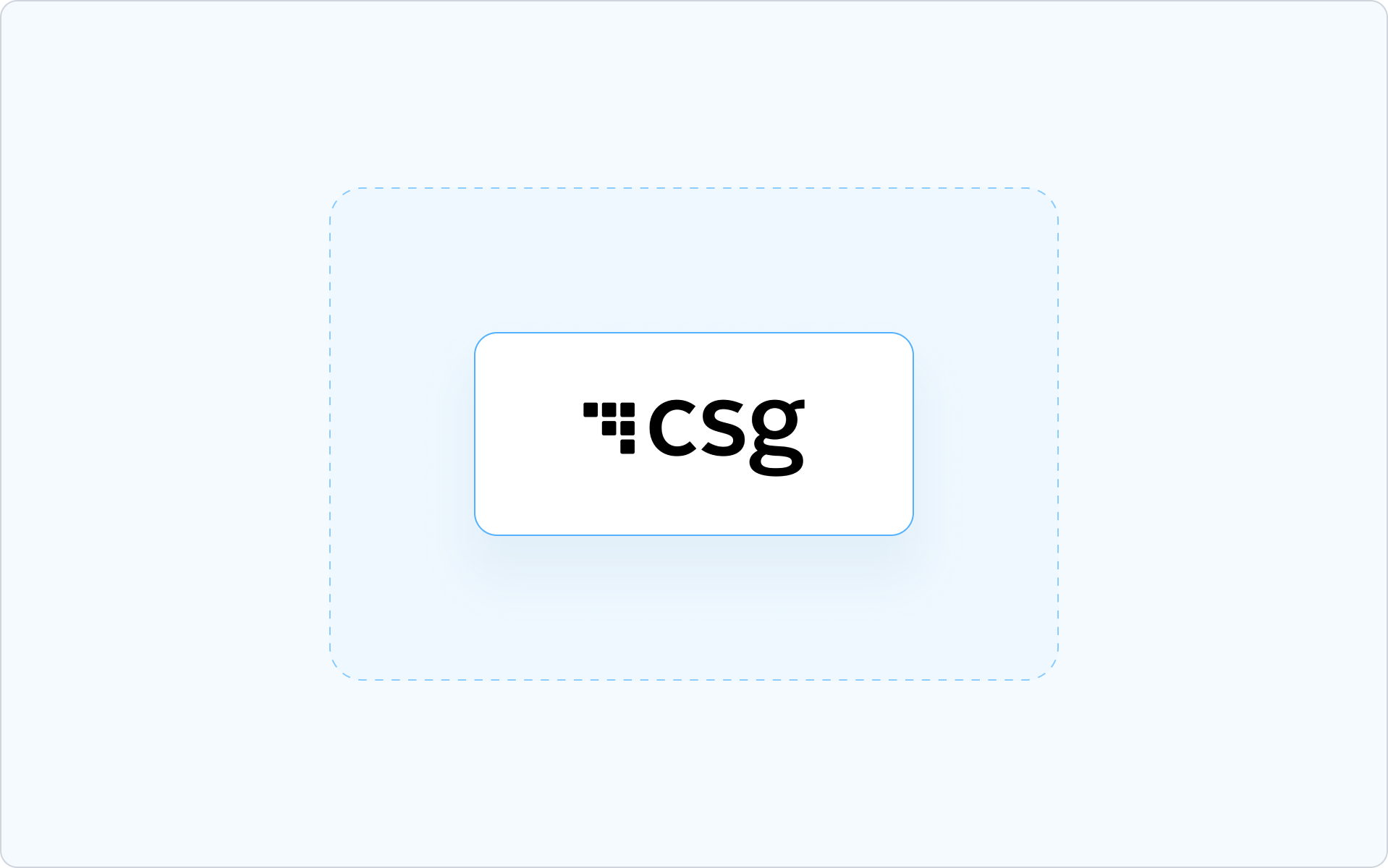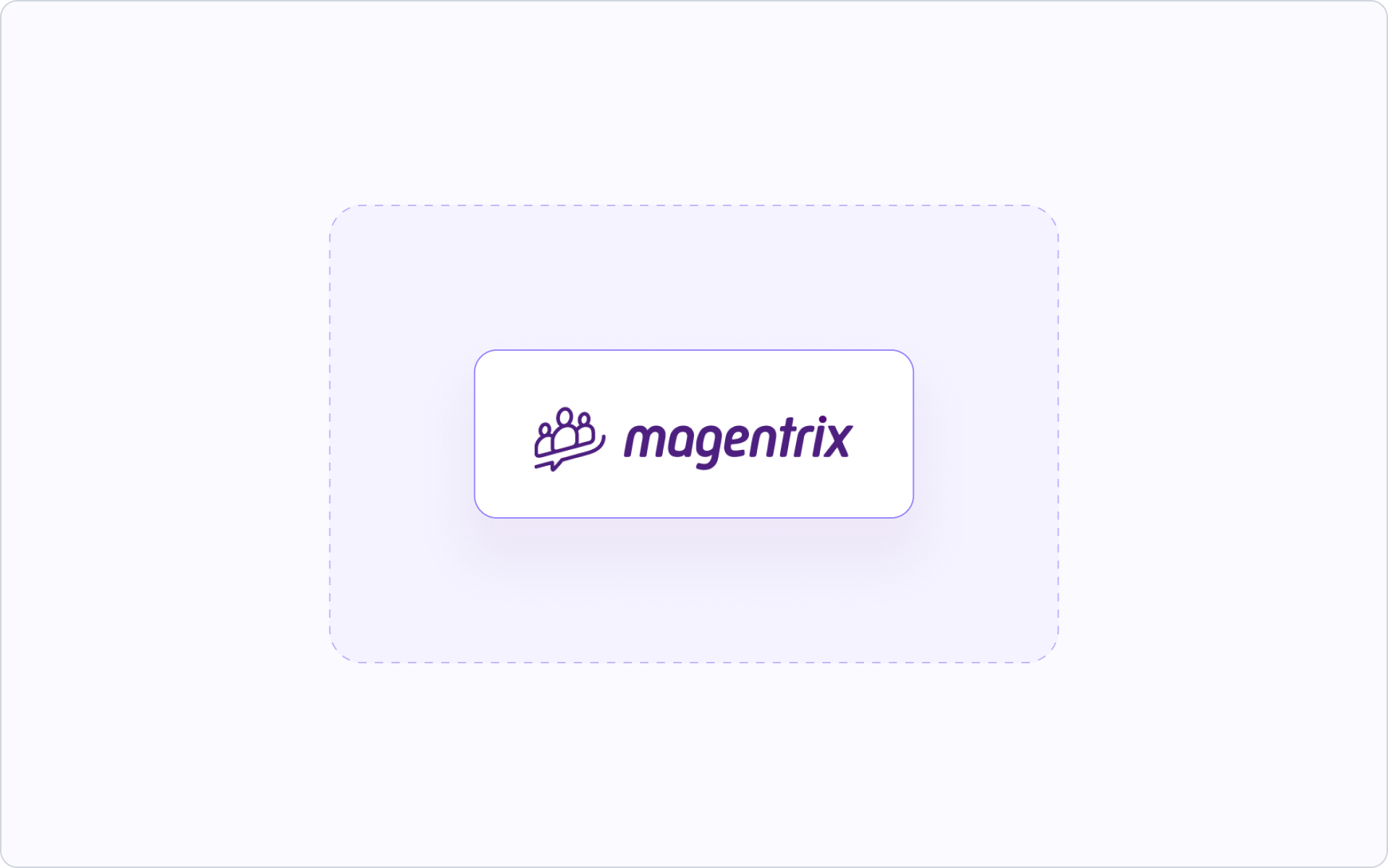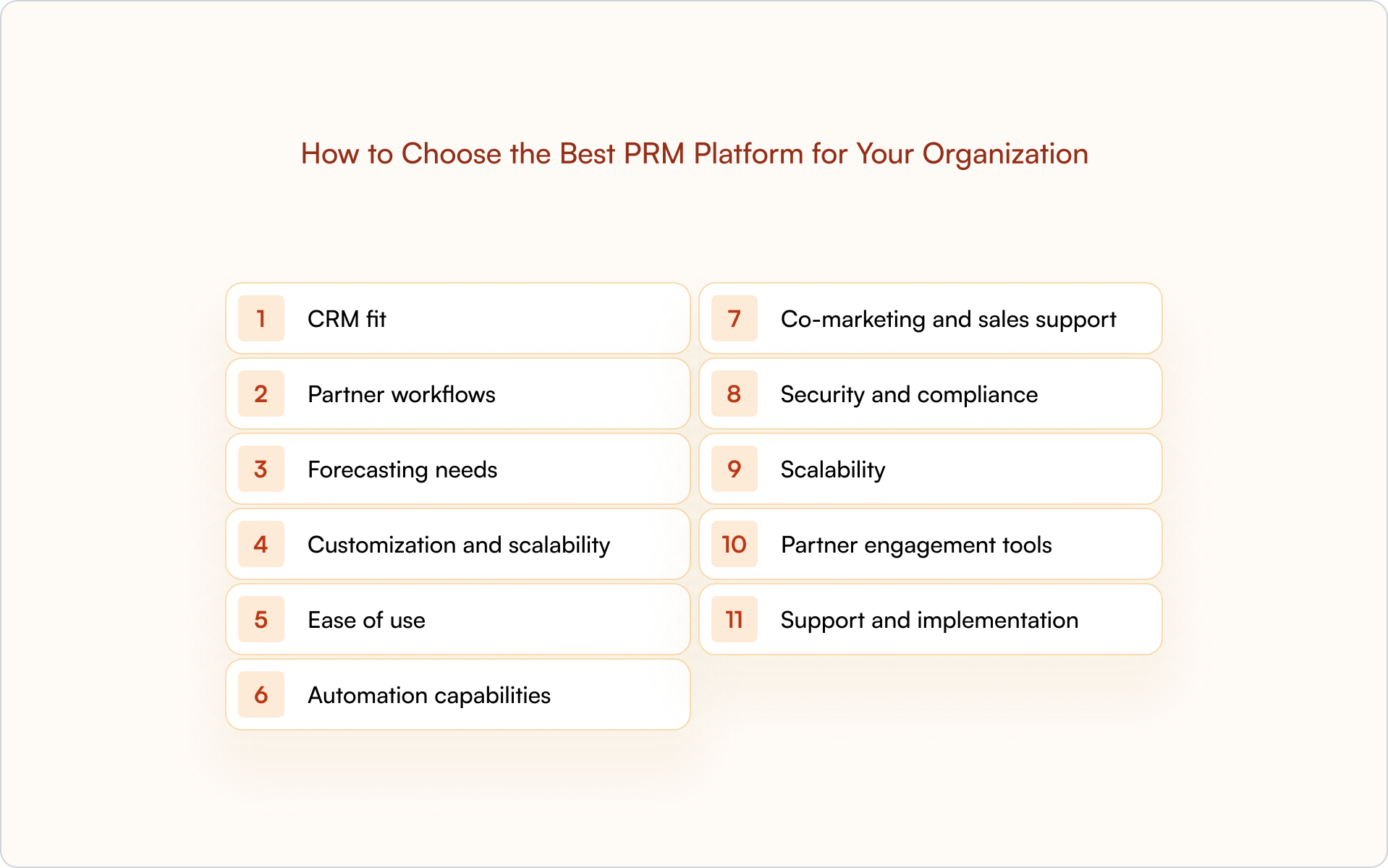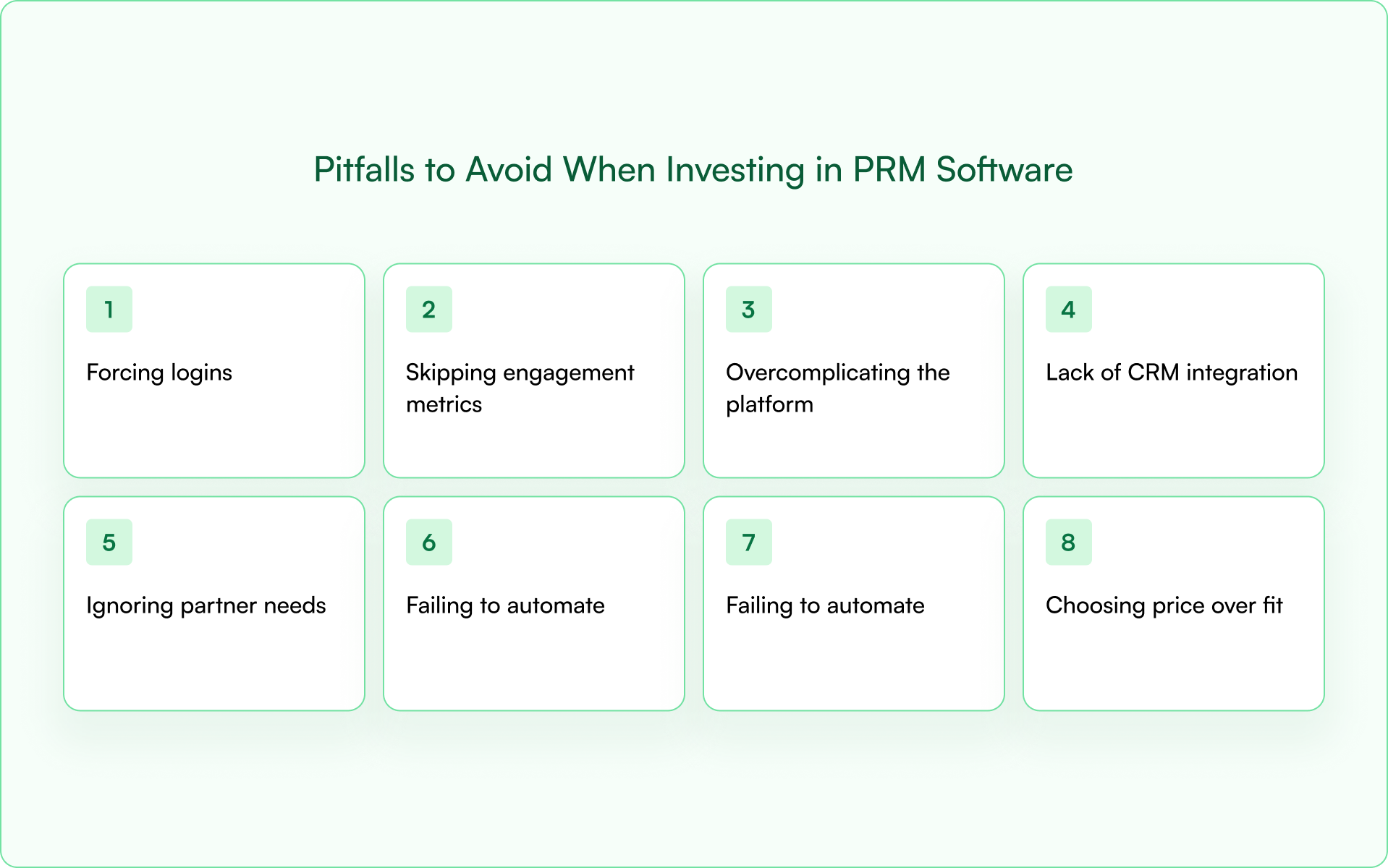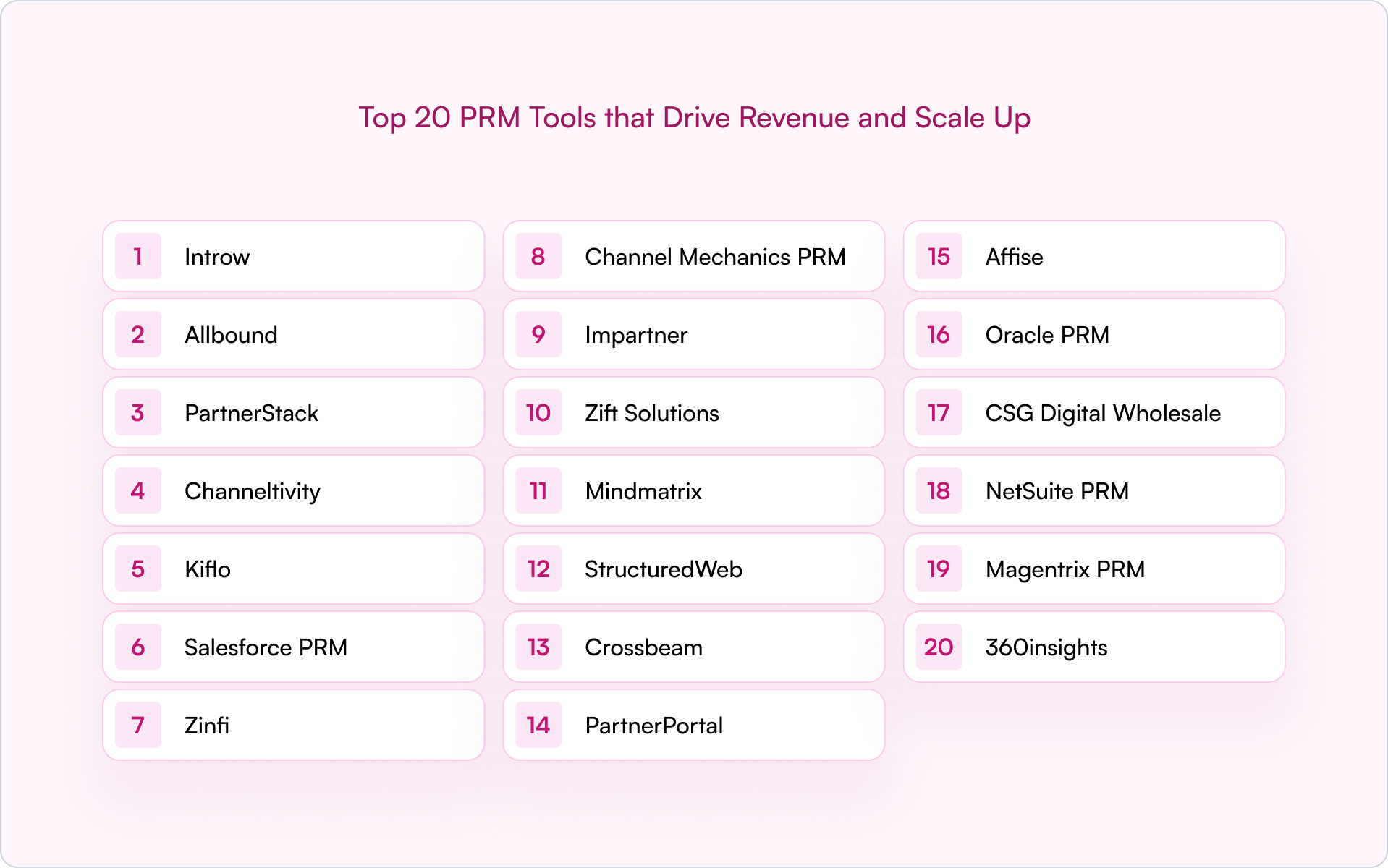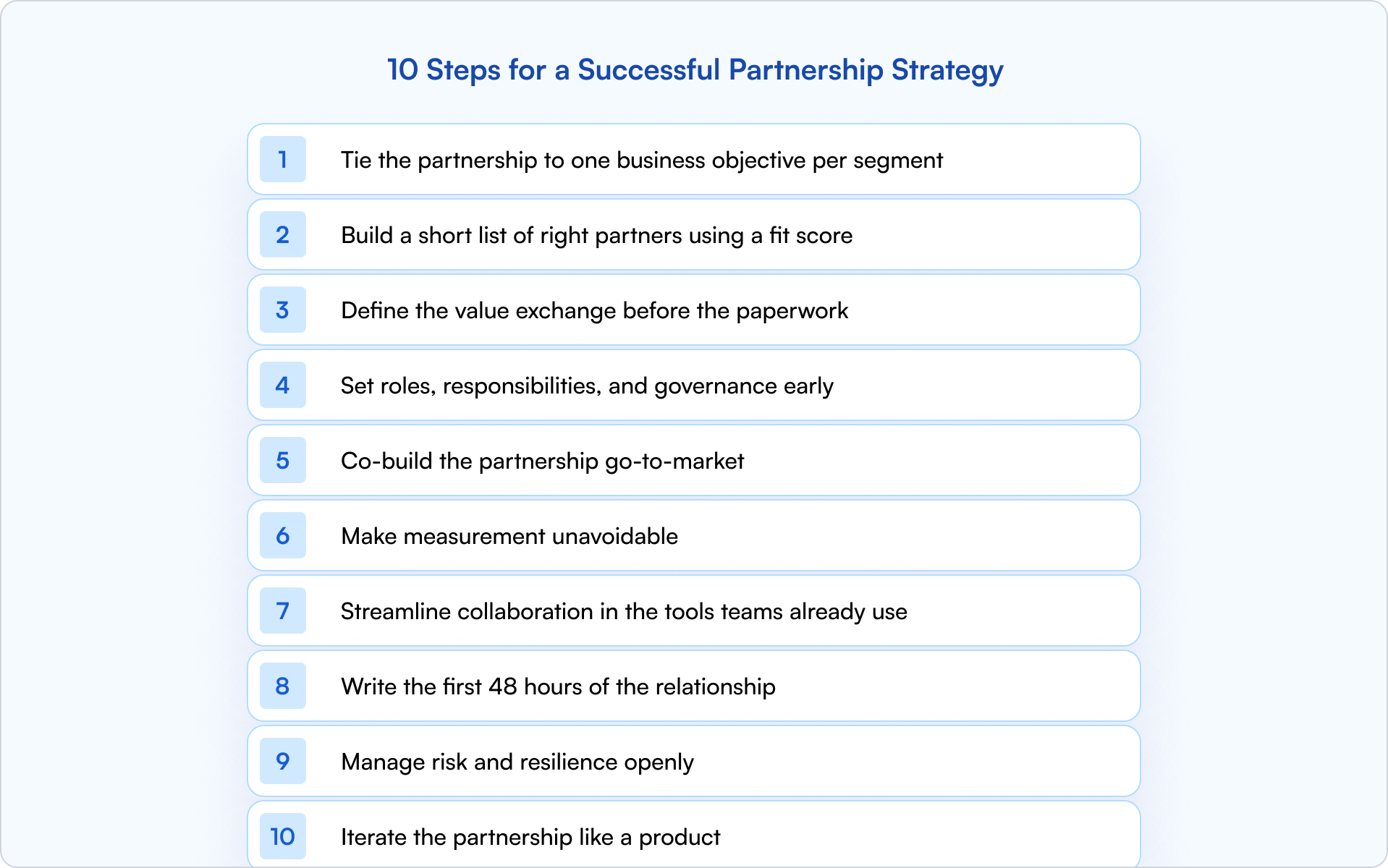A strong CRM system should be the backbone of your partner programs.
Embrace your CRM when it comes to partner management, and you can expect centralized relationships, seamless collaboration, full alignment with business operations, fewer channel conflicts, and improved revenue projections.
What's more, by embedding partner management within a CRM, businesses gain a unified source of truth, improving efficiency, accountability, and long-term success in partner ecosystems.
Traditional, siloed partner tools simply can't keep up with the power of modern CRMs.
It makes sense, then, that businesses are increasingly shifting to CRM-first workflows, integrating partner management into broader customer and revenue strategies.
This transition eliminates inefficiencies caused by disconnected systems, enabling real-time visibility into partner performance.
When moving to a CRM-first workflow, businesses must understand the importance of native integrations, deal tracking, and forecasting.
Look for CRM tools that offer native integrations with marketing automation, sales pipelines, and support tools to ensure that partner activities are fully aligned with business operations.
Meanwhile, deal tracking within a CRM allows businesses to monitor partner-driven opportunities, assign leads effectively, and prevent channel conflicts.
And forecasting capabilities provide data-driven insights into revenue projections, helping companies optimize their partner strategies.
To sum up, a CRM-first approach fosters stronger, data-backed partnerships that drive sustainable growth.
⬇️In this guide, we'll cover everything you need to know to make the best CRM decision for your business and your partners.
What to Look for in a CRM for Partner Management
When considering which CRM to go for, you'll undoubtedly already have several 'must have' features in mind.
But here are the most important features to look out for when it comes to partner management:
- Partner lead/deal registration
- Custom fields and workflows for channel/reseller/referral types
- Engagement tracking and collaboration tools
- Reporting and forecasting across partner-attributed pipeline
- Integration with PRM tools like Introw
- Scalability and API access for custom automation
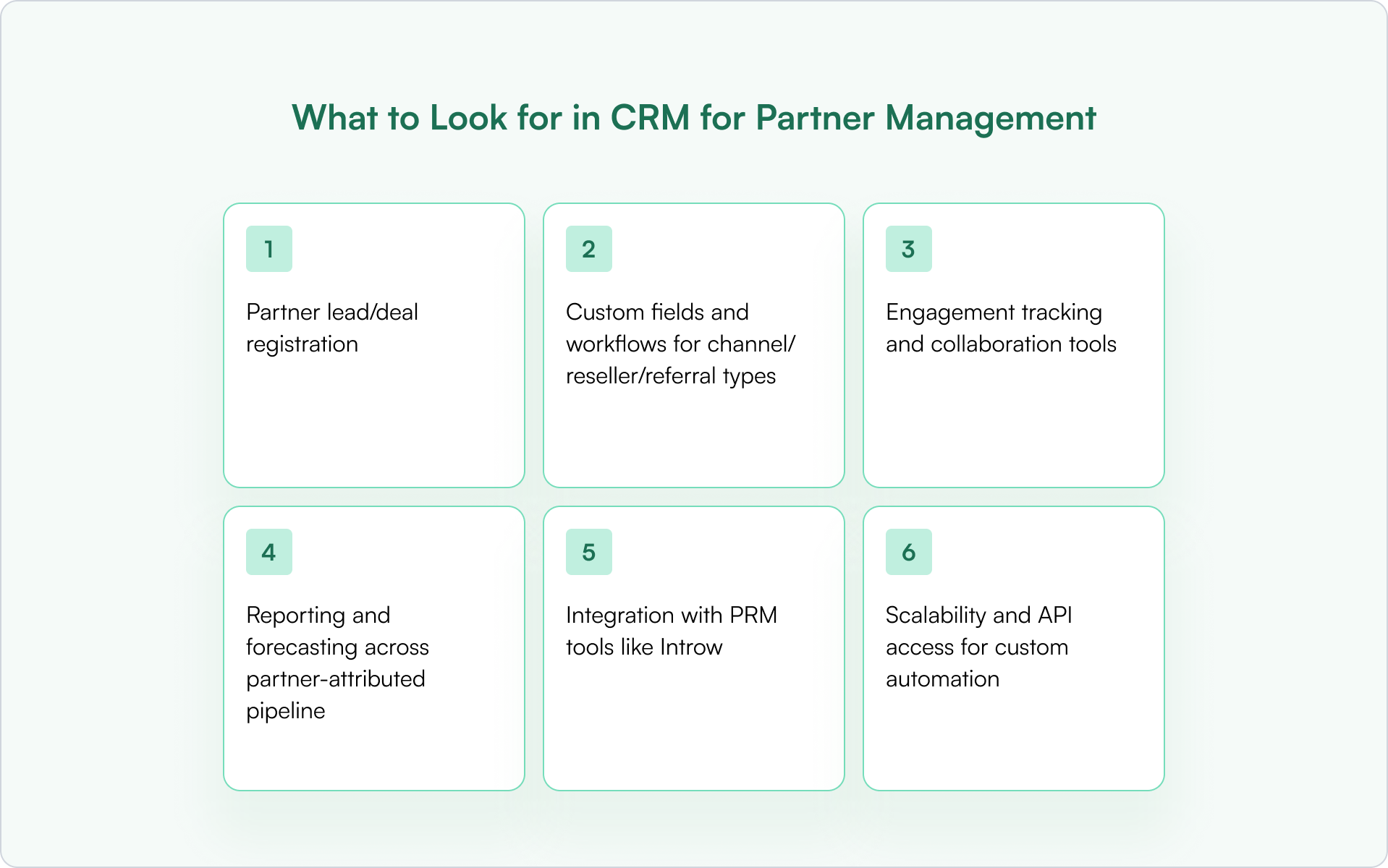
15 Best CRM Platforms for Partner Management in 2026
So, we know that a CRM-first approach has a wide variety of benefits for partner management.
But choosing the right CRM can be daunting; after all, it's a pretty big decision.
And not every CRM is fit for partner management.
To help you out, we've compiled a list of the best 15 CRM for partner management, along with their pros and cons.
#1 HubSpot

A giant of the CRM world, HubSpot's CRM is super popular among growing SaaS teams.
This comprehensive, AI-powered platform is designed to unify customer data, streamline business operations, and enhance customer experiences.
It offers a suite of tools across marketing, sales, customer service, content management, and operations, all integrated into a single system to facilitate seamless collaboration and efficiency.
And when it comes to partner management, Hubspot's CRM boasts several key features, including:
For partner management, HubSpot CRM provides several key features:
✅ CRM partner relationship management (PRM) integrations: Access PRM software Introw through HubSpot's App Marketplace for partner engagement tracking, lead registration, and Slack-based collaboration.
✅ Association labels: Define and manage relationships with partners by labelling companies as "Partner" or "Distributor," clarifying roles and facilitating targeted communication.
✅ Partner services: Utilize Partner Services to track and manage services provided by partners, ensuring organized and efficient collaboration.
✅ Automation: Save time by automating workflows and repetitive processes
These features enable businesses to effectively manage and nurture their partner relationships within HubSpot CRM.
🔗 Find out more about how Introw and Hubspot work together
#2 Salesforce
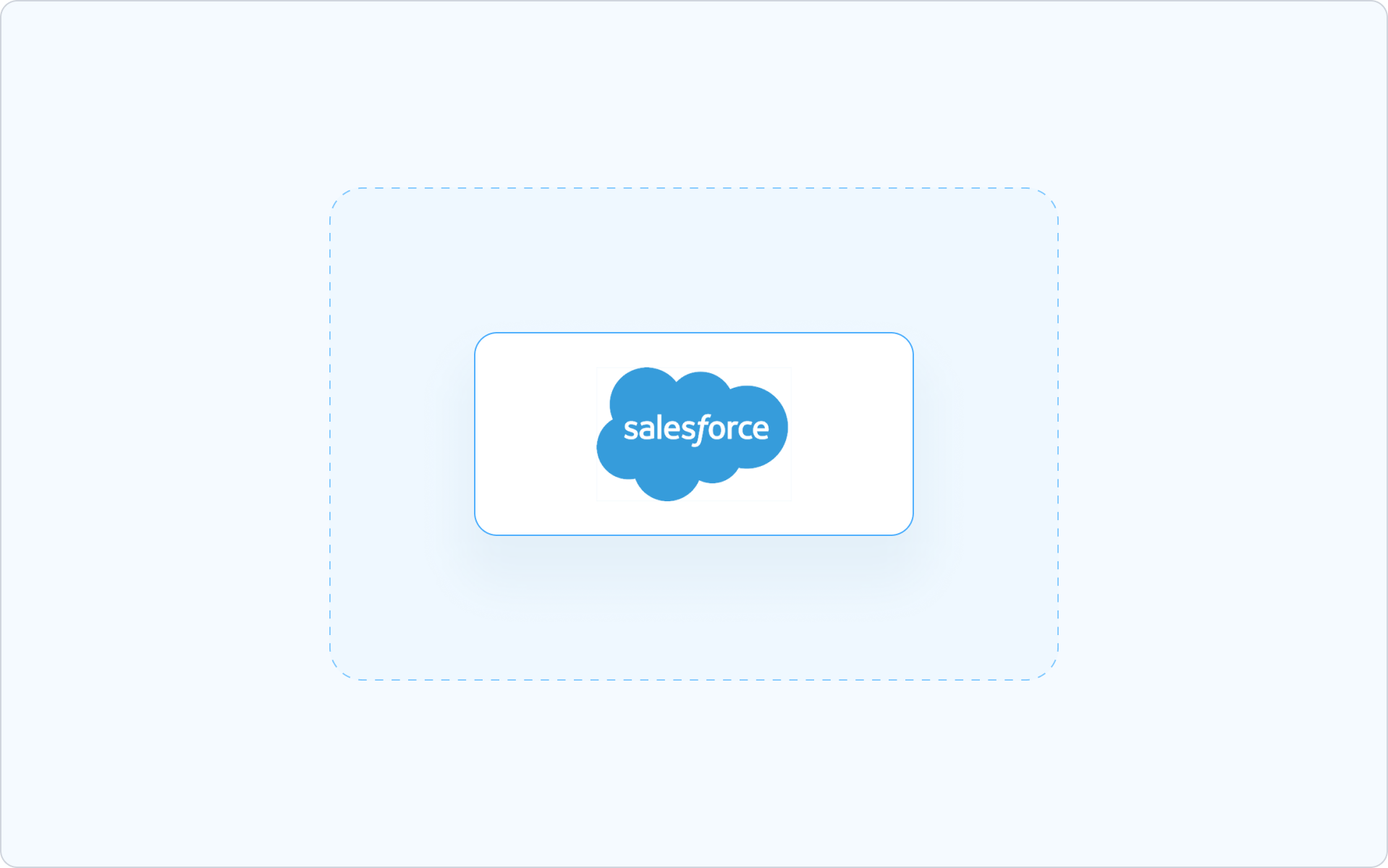
Salesforce remains the gold standard for enterprise partner programs.
This comprehensive, cloud-based platform streamlines customer relationship management and partner relationship management by integrating sales, marketing, customer service, and more into a unified system.
It empowers businesses to enhance customer interactions, improve satisfaction, and drive growth through data-driven insights and automation.
For partner management in CRM, Salesforce CRM offers several key features:
✅ Partner relationship management software integration: Seamlessly integrates with Introw to place PRM functionalities firmly within the CRM, enabling tracking of partner pipeline, engagement, and performance — all natively.
✅ Powerful reporting and forecasting: Delivers key data insights to enable data-driven decisions, as well as accurate forecasting.
✅ Personalized partner engagement: Provides personalized templates and data-driven enablement tools to engage partners effectively, enhancing communication and collaboration.
✅ Automated processes: Automates marketing fund requests, discounting, and service case management, reducing manual tasks and increasing efficiency in partner interactions.
✅ Real-time updates with partner connect: Facilitates secure deal tracking and real-time, automated updates on co-selling deals across different CRMs, ensuring transparency and reducing data duplication.
✅ Scalability: Built on the Salesforce platform, it scales easily to accommodate growing partner ecosystems, adapting to evolving business needs.
🔗 Learn more here: Introw + Salesforce Integration
#3 Zoho CRM

Zoho offers a flexible, cloud-based CRM that helps businesses manage sales, marketing, and customer relationships efficiently.
It's also a good option for those looking for a CRM that will support partner relationship management for sustainable business growth.
✅ Territory management: Organize and manage partner territories effectively, aligning sales strategies with specific regions or market segments.
✅ Workflow automation: Automate routine tasks and processes, enabling partners to focus on strategic activities and improving overall efficiency.
✅ Advanced analytics: Gain insights into partner performance through detailed reports and dashboards, facilitating data-driven decision-making.
✅ Customizable modules: Tailor CRM modules to fit specific partner management needs, ensuring a personalized and relevant experience.
✅ Multi-channel communication: Engage with partners across various channels, including email, phone, and social media, ensuring seamless communication.
Pros: Affordable, customizable, partner portal add-on
Cons: Weaker reporting, fewer native integrations
Best For: SMEs or mid-market teams just starting their partner motion.
#4 Microsoft Dynamics 365

Microsoft Dynamics 365 is an AI-powered suite of business applications that combines CRM and ERP capabilities to enhance customer experiences and business operations.
It integrates sales, marketing, service, and financial data to help organizations innovate, automate processes, and drive growth.
It encompasses several key features for partner management:
✅ Manage partner relationships with shared data insights
✅ Automate lead and opportunity tracking
✅ Integrate partner sales data for streamlined collaboration
✅ Enable partner performance monitoring through analytics
✅ Use AI to provide personalized partner support
Pros: Deep integrations, enterprise-friendly
Cons: Steep learning curve, dev-heavy
Best For: Enterprises already deep in Microsoft's stack or those with in-house CRM admins
#5 Pipedrive

Pipedrive offers a clean, simple CRM that's easy to use.
It automates repetitive tasks, tracks communications, and provides actionable insights to help sales teams optimize performance.
Admittedly, this one isn't purpose-built for partners, but it can support small partner programs with the right tagging and workflows.
When it comes to partner management, Pipedrive allows you to:
✅ Organize and track partner interactions in one space
✅ Automate partner follow-ups and communications
✅ Visualize partner pipeline for better decision-making
✅ Use AI for personalized partner management insights
✅ Centralize partner data for easy collaboration and reporting
Pros: Visual pipeline, easy setup
Cons: Limited partner automation, no partner-specific fields
Best For: Early-stage teams experimenting with partnerships
#6 Close.com

Close CRM is a platform designed to streamline sales processes for small businesses, focusing on automation, communication, and deal management.
It offers an intuitive, fast interface for managing leads and communications — and can also prove useful for partner relationship management.
Here's how:
✅ Track partner interactions and pipeline progress
✅ Automate partner outreach and follow-ups
✅ Centralize partner data and activity
✅ Monitor partner performance with analytics
✅ Seamlessly integrate with other tools for collaboration
Pros: Simple, easy-to-use
Cons: Limited customization
Best For: Small businesses with big growth ambitions
#7 Freshsales

Freshsales by Freshworks is an AI-powered sales CRM that enhances revenue growth with automation, lead scoring, and predictive analytics.
It streamlines workflows and provides insights to improve sales efficiency.
Here's how it can boost partner management:
✅ Track and manage partner relationships efficiently
✅ Automate follow-ups and communication with partners
✅ Centralized data for seamless collaboration
✅ AI-powered insights to optimize partner engagement
✅ Customizable pipelines to monitor partner deals
Pros: Easy to use and excellent customer support
Cons: Limited features and a steep learning curve
Best For: Start-ups and SMEs that need a friendly, affordable CRM solution.
#8 Copper

A relationship-focused CRM designed for Google Workspace users, Copper is all about streamlining contact management, deal tracking, and workflow automation.
It also minimizes data entry and integrates seamlessly with Gmail.
Key features for partner management:
✅ Centralized partner contact and activity tracking
✅ Automated workflows for partner communications
✅ Custom pipelines to monitor partner deals
✅ Seamless integration with Google Workspace
✅ Real-time reporting and analytics for partner performance
Pros: Easy integration with Google properties, user-friendly
Cons: Limited scalability
Best For: Businesses that depend on Google Workspace
#9 Insightly
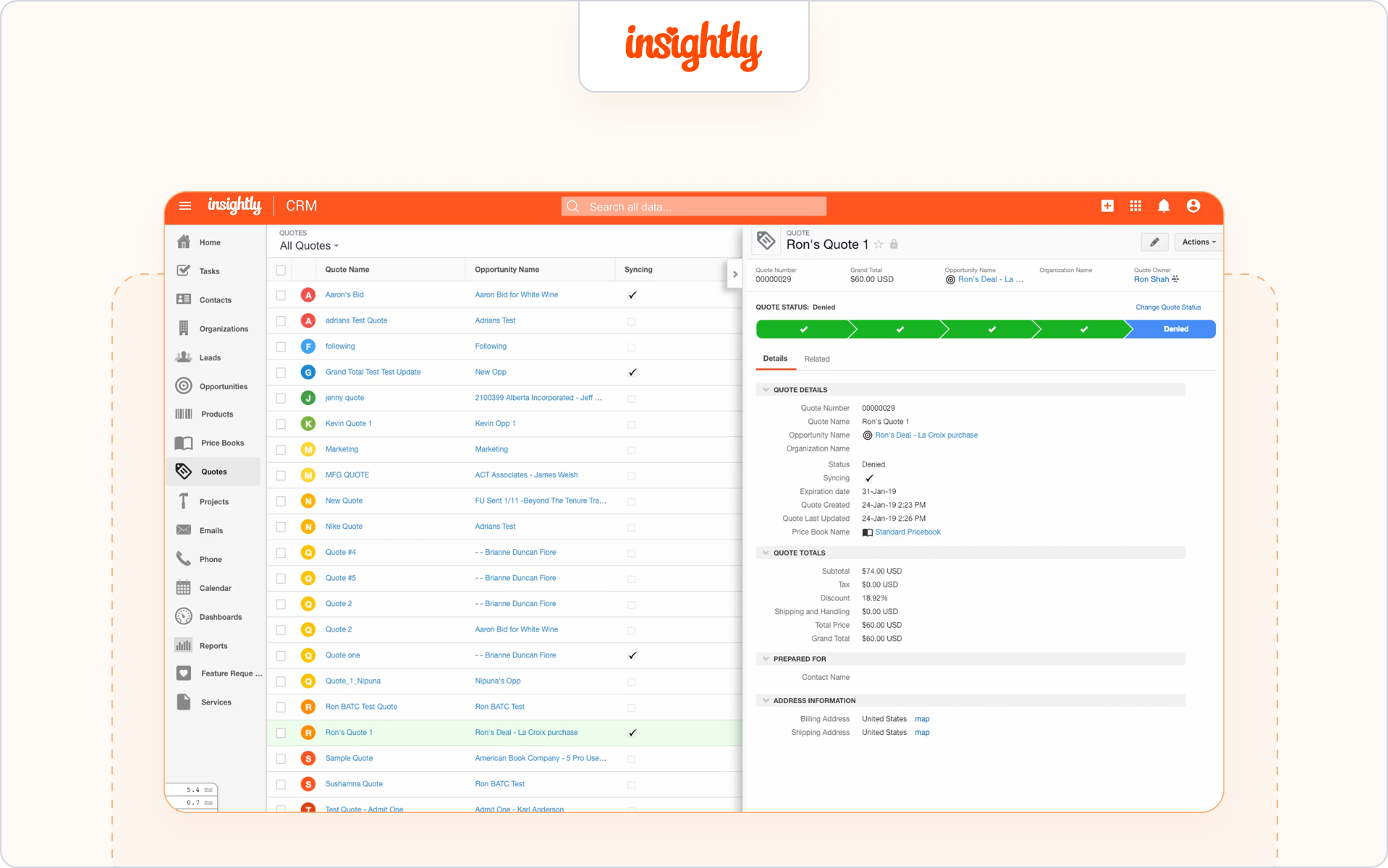
Insightly is a scalable CRM designed for businesses to manage customer relationships, sales, and marketing in one platform.
It offers automation, project tracking, and analytics to drive growth and efficiency.
Looking for a CRM to boost partner management?
Here's how Insightly can support PRM:
✅ Centralized partner relationship tracking
✅ Automated workflows for partner interactions
✅ Customizable pipelines for deal management
✅ Advanced analytics for partner performance monitoring
✅ Integration with third-party apps for collaboration
Pros: Great customer support and deep customization
Cons: Steep learning curve
Best For: SMEs and start-ups looking for a customizable and scalable CRM.
#10 SugarCRM

A flexible, AI-driven CRM platform, SugarCRM is designed for B2B sales, marketing, and customer service.
It automates data collection, provides predictive insights, and streamlines workflows for enhanced efficiency.
Key features for partner management include:
✅ Centralized partner relationship tracking
✅ AI-powered insights for partner engagement
✅ Automated workflows for seamless collaboration
✅ Custom dashboards for partner performance monitoring
✅ Integration with third-party tools for extended functionality
Pros: Lots of features, good customer support
Cons: Long implementation, steep learning curve
Best For: Large businesses and enterprises looking to commit to a CRM long-term
#11 Nutshell CRM
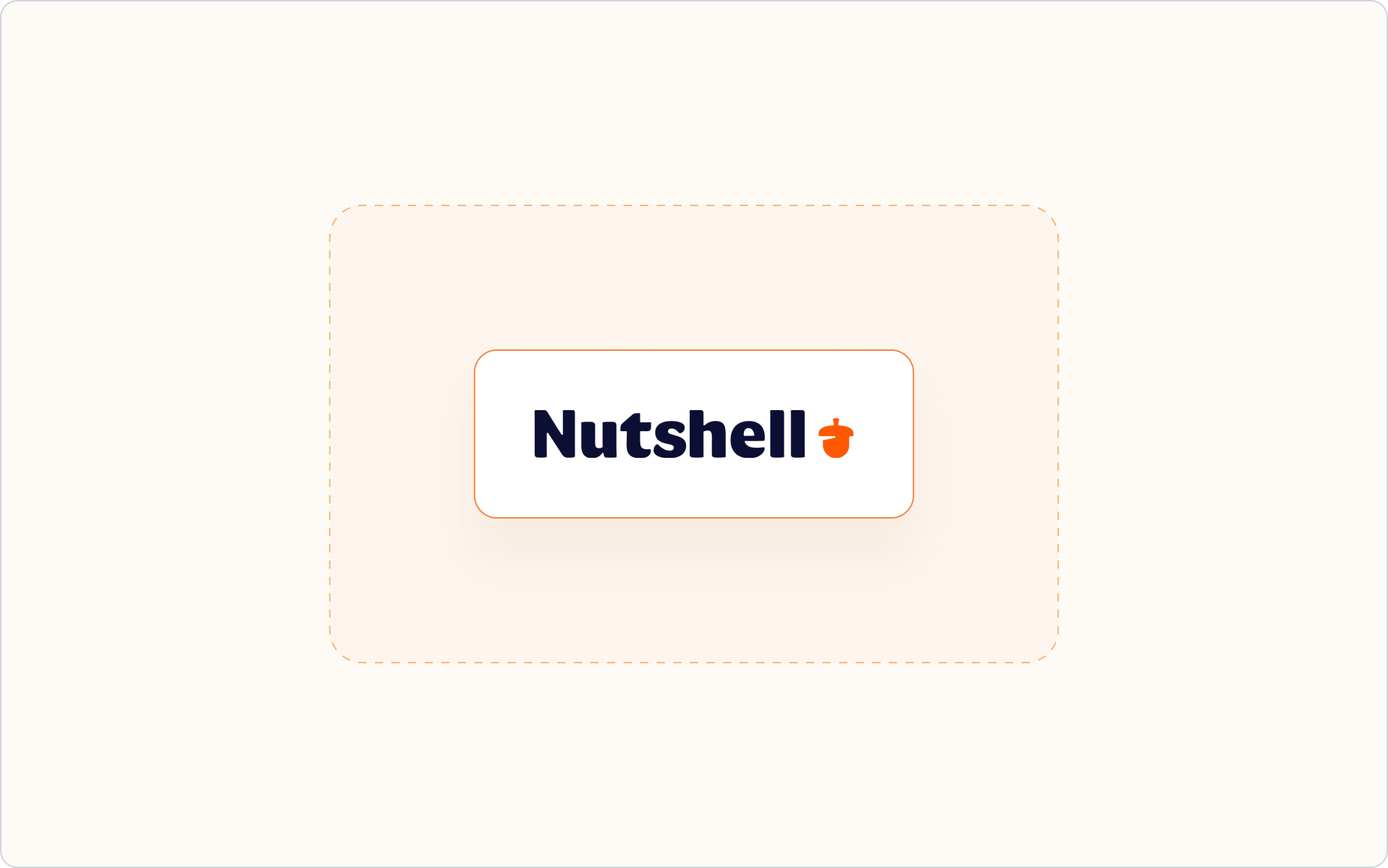
Nutshell is a user-friendly CRM that combines sales, marketing, and pipeline management into one intuitive platform.
It simplifies lead tracking, automates workflows, and integrates with essential tools to enhance team collaboration and efficiency.
Here are Nutshell's most useful partner management features:
✅ Centralized partner contact and deal tracking
✅ Automated follow-ups and task reminders
✅ Customizable pipelines for partner relationship management
✅ Integration with marketing automation tools for outreach
✅ Real-time reporting and analytics for partner performance
Pros: Simple, easy to use, great customer support
Cons: Steep learning curve, limited integrations
Best For: Smaller businesses looking for a simple, affordable CRM
#12 Creatio
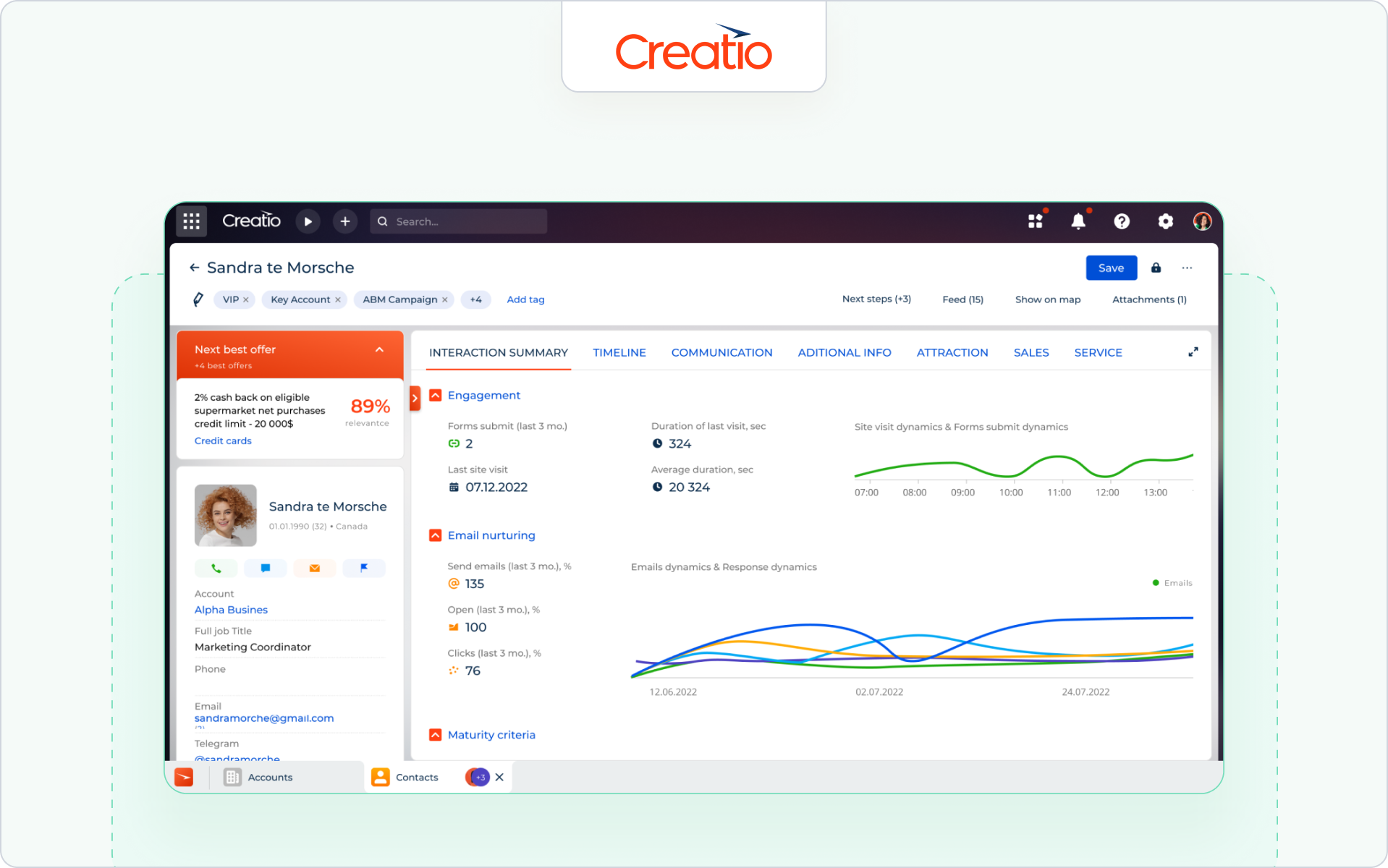
Creatio is an AI-powered, no-code CRM platform.
It automates workflows and customer relationship management for sales, marketing, and service teams, empowering businesses to streamline operations, optimize engagement, and enhance productivity.
It's pretty helpful when it comes to partner management, too.
Here's how:
✅ Centralized partner relationship tracking
✅ AI-driven insights for partner engagement
✅ No-code automation for partner collaboration
✅ Custom dashboards for performance monitoring
✅ Seamless integrations for extended functionality
Pros: Great automation, customization, and usability
Cons: Steep learning curve
Best For: Large businesses with multiple departments that require smooth company-wide adoption
#13 NetSuite CRM

NetSuite is a cloud-based business management suite that includes CRM, ERP, and financial tools to streamline operations, automate workflows, and improve decision-making.
It provides robust partner management capabilities, such as:
✅ Partner relationship management with centralized data
✅ Automated workflows for seamless collaboration
✅ Real-time analytics for partner performance tracking
✅ Custom dashboards to monitor deal progress
✅ Integration with third-party applications
Pros: Great functionality and ease of use.
Cons: Steep learning curve, expensive, complex implementation
Best For: Enterprises that need to streamline their processes.
#14 Monday CRM

Monday CRM is a flexible, no-code customer relationship management platform that helps businesses manage sales, projects, and workflows.
It centralizes data, automates tasks, and enhances collaboration to improve efficiency.
Monday's key features for partner management include:
✅ Centralized partner tracking and collaboration
✅ Automated workflows for partner onboarding and engagement
✅ Customizable pipelines to manage partner deals
✅ Integration with third-party tools for seamless operations
✅ Real-time analytics for partner performance insights
Pros: Great range of features, scalable, easy to customize
Cons: Steep learning curve
Best For: SMEs and service businesses
#15 Zendesk Sell

A modern sales CRM, Zendesk Sell enhances productivity, provides full pipeline visibility, and integrates automation to streamline deal management.
It helps sales teams manage leads, track interactions, and optimize workflows.
However, its features can also be used for PRM, including:
✅ Centralized partner tracking and collaboration
✅ Automated workflows for partner engagement
✅ Customizable sales pipelines for partner deals
✅ Real-time analytics for partner performance insights
✅ Seamless integrations with external tools
Pros: Simple user interface, intuitive to use, good automation features
Cons: Complex setup
Best For: Businesses of any size that want to streamline their processes
How to Choose the Right CRM for Partner Management
Ready to decide on your new CRM?
Here are some handy guidelines.
Make sure your new CRM has:
- Native or customizable deal reg
- CRM alignment with partner program complexity
- Integration with a PRM like Introw
- Automation and reporting
And watch out for these common pitfalls:
- No partner-specific fields or segmentation
- Manual tracking outside the CRM
- No integration between CRM and partner activities
Three final tips for choosing a CRM for partner channel management:
- Align with RevOps early
- Evaluate scalability and workflow compatibility
- Test integrations with tools like Introw
How Introw Supercharges CRM for Partner Management
Of course, when it comes to partner relationship management, a CRM alone won't do.
Sure, investing in the right CRM can significantly boost your partner relationships, but if you aim to establish a profitable ecosystem, PRM software is crucial.
And your PRM must integrate seamlessly with your CRM.
This is where state-of-the-art PRM Introw comes in.
Here's why Introw stands out among other PRMs:
- CRM-first: your team works entirely within Salesforce or HubSpot — no extra logins, no tool-switching. Partners still collaborate via a dedicated portal, fully synced with your CRM.
- Deal and lead registration are mapped directly to the CRM
- Partner engagement tracking is synced with both the CRM and Slack
- Forecasting and visibility operates across all partner-attributed revenue
- No-code workflows for referrals, resellers, and MSPs
But don't just take our word for it — book your personalized demo today and see Introw in action.
Conclusion
The message is clear — choosing the right CRM is foundational to scaling partner revenue.
The best CRMs support visibility, collaboration, and clean partner data.
They also integrate seamlessly with your PRM, empowering you to effectively manage your partners without leaving your CRM.
To recap, here are the 15 best CRMs for partner management in 2026:
- HubSpot
- Salesforce
- Zoho CRM
- Microsoft Dynamics 365
- Pipedrive
- Close.com
- Freshsales
- Copper
- Insightly
- SugarCRM
- Nutshell CRM
- Creatio
- NetSuite CRM
- Monday CRM
- Zendesk Sell
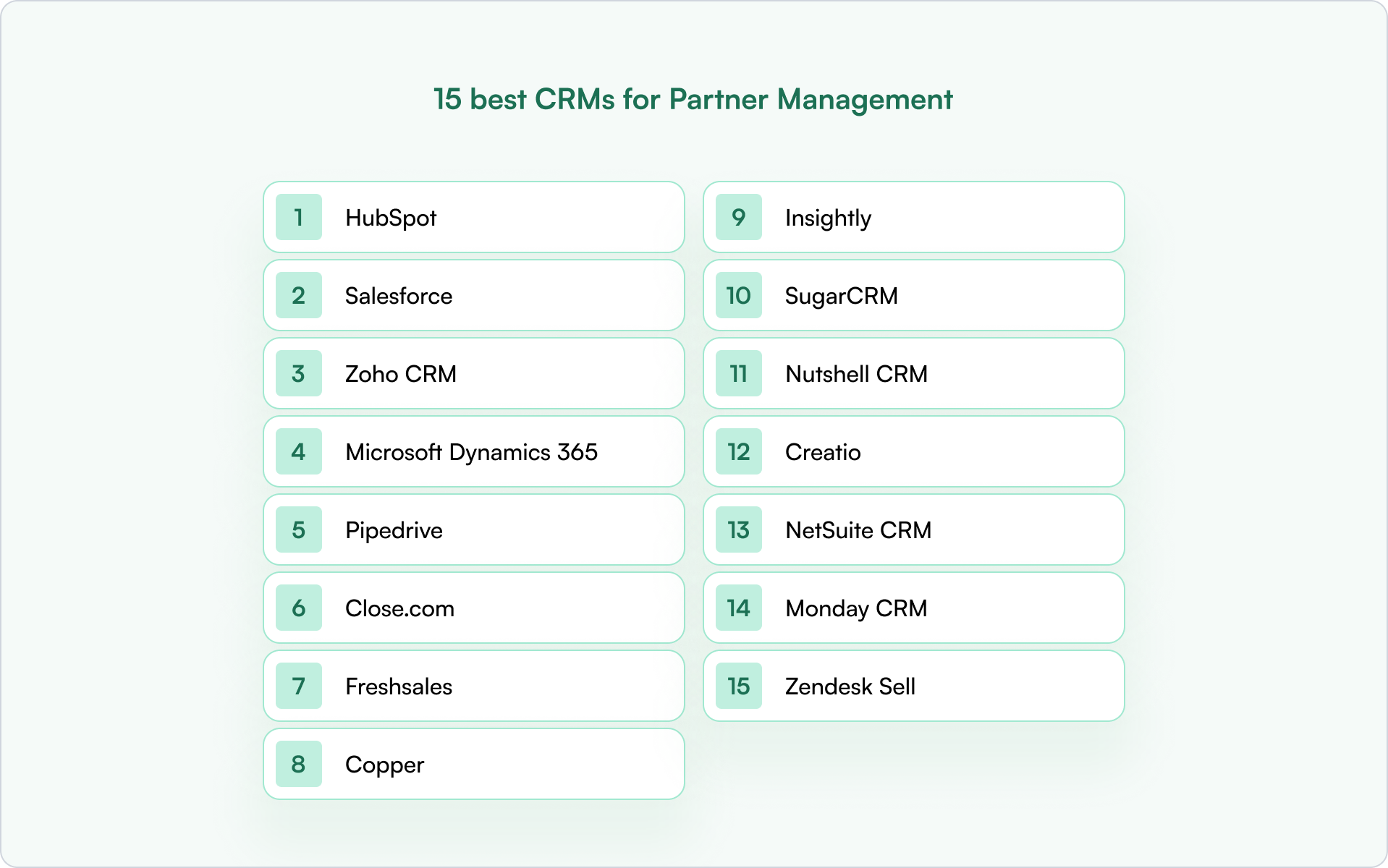
Want to manage your entire partner program from your CRM? Try Introw — the CRM-first PRM.
What is PRM, and how is it different from a CRM?
PRM (Partner Relationship Management) is software designed to help businesses manage partner programs, track partner sales, and optimize collaboration with channel partners, resellers, and affiliates. Unlike CRM software, which focuses on direct sales teams and customer relationships, a PRM system is built to support indirect sales channels by providing features like partner onboarding, deal registration, and performance tracking.
How do I choose the best PRM for my business in 2026?
When selecting a PRM platform, consider factors such as ease of implementation, CRM integration, automation features, and partner engagement tools. A good PRM solution should help you streamline business processes, reduce manual data entry, and improve partner collaboration. Look for features like 2-way CRM sync, marketing collateral management, and automated partner updates via Slack or email.
What are the key benefits of using a PRM solution?
A PRM system helps businesses manage partner relationships efficiently, leading to higher revenue growth, better sales performance, and improved customer satisfaction. Key benefits include: - Automated partner onboarding – Get new partners up to speed quickly. - Deal registration & lead tracking – Reduce conflicts and improve visibility. - Performance management – Track partner success, revenue targets, and engagement metrics. - Marketing & content sharing – Ensure partners have the necessary resources to sell effectively.
Why is Introw the best PRM solution in 2026?
Introw stands out as a modern PRM platform that prioritizes fast setup, seamless CRM integration, and partner engagement beyond the portal. Unlike traditional PRMs that require months of setup, Introw is ready to use in minutes. It also offers: - 1-click CRM integration – Works effortlessly with HubSpot, Salesforce, and other CRM systems. - Real-time analytics & reporting – Track partner performance and sales opportunities. - Automated partner updates – Keep partners informed via Slack, email, or in-app notifications.


.svg)


























